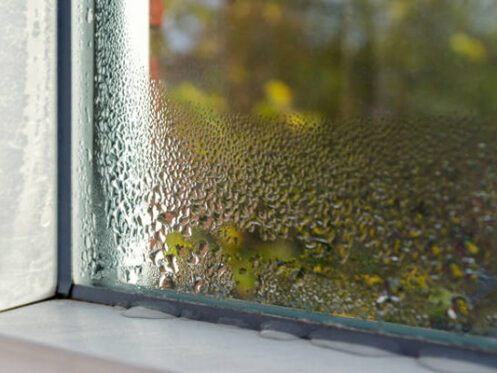The amount of water vapor in the air is known as humidity. It is best to regard it in relation to temperature. The air’s ability to hold water changes as temperatures rise or fall.
Let’s say the humidity is constantly higher than what is advised. In that instance, an abundance of moisture can encourage the formation of mold, which can cause a variety of concerns, from health problems to structural damage to your property. Dryness and itching can result from low, unhealthy humidity levels.
No matter what type of climate you live in, the levels of relative humidity in the air can affect the comfort of your home, as well as the proper functioning of your heating and air conditioning units. Simple solutions can help you manage the ideal indoor humidity.
Six Indicative Signs of Low Indoor Humidity
If you’re anything like the rest of us, you undoubtedly lack a sixth sense for the perfect indoor humidity level. However, by keeping an eye out for the following indicators, you may still evaluate the air quality in your house.
1. You’re Having Trouble Sleeping
Did you realize that a lackluster indoor humidity level can seriously ruin your sleep? In light of this, it might be time to think about the air you’re inhaling if you’ve been tossing and turning in bed without apparent cause.
According to the National Sleep Foundation, breathing during the night might be caused by dry air. However, damp air often also makes it more difficult to get to sleep and stay asleep. It may also have an impact on how long you spend in certain phases of sleep.
2. You Consistently Perspire or Feel Chilly at Home
Nobody enjoys perspiring profusely minute after minute! It’s likely that your home’s humidity is higher than normal if you feel sticky all the time there.
In contrast, even if the thermostat is set to the appropriate temperature, dry air will make you feel colder.
3. It’s Hard to Breathe Well
Excessive humidity or a lack of it can be nightmares for persons with respiratory conditions like asthma. According to Healthline, breathing in humid air triggers pulmonary neurons, which in turn causes the airways to constrict. Additionally, allergens and chemicals that cause asthma symptoms are trapped in the humid air.
Your mucus membranes become depleted by dry air, which prevents them from capturing microorganisms before they enter your system. As a result, you have a higher chance of getting a cold. Additionally, insufficient indoor humidity can lead to respiratory conditions including bronchitis and sinusitis.
4. There Are Lots of Silverfish in Your Home
Silverfish are everywhere in your home. These nocturnal insects, which are widely viewed as pests that spread disease wherever they go, are highly drawn to moist environments. A silverfish infestation in your flat could be a sign that the humidity level is too high. Make careful to look for signs of silverfish in your bathrooms, kitchens, laundry rooms, garages, and cabinets.
5. You notice mold spots
You notice moldy areas. If your walls and ceilings are discolored, you may have mold developing around your home. You might be able to detect the distinctive musty scent of black mold even if it is disguised. We advise you to act immediately to control your interior humidity because mold and mildew thrive in high humidity.
6. Electrostatic Discharge is Felt (ESD)
Electrostatic discharge frequently occurs in low relative humidity environments (ESD). This can just be a momentary shock you get when you touch a doorknob. But in extreme circumstances, ESD can destroy electronics and computers.
What’s so special about optimal indoor humidity, then?
Why should people take proactive steps to manage the humidity levels in their homes?
Let’s examine the main drawbacks of both high and low humidity to provide a response.
The Dangers of Unreasonably Low or High Indoor Humidity
1. A Lot of Indoor Humidity
As previously said, humidity is hazardous on both ends of the spectrum. It can cause a lot of issues at its most extreme.
A) Pain in the Body
Sitting in an enclosed, unventilated space when the temperature is rising is one of the most unsettling experiences one can have. A formula for calamity is created when you add too much humidity to the mixture. It is fairly difficult to unwind and unwind when your home has a greenhouse-like atmosphere inside.
B) Bacterial Development
Do members of your family get sick a lot in the summer? You might be to blame for the inside humidity, believe it or not. High humidity facilitates the growth of fungus, dust mites, and germs. That may represent a major threat to persons who have upper respiratory conditions like allergies, asthma, and related conditions.
C) Damage to Furniture
Hair that is too humid encourages the growth of mold and mildew, which are known for harming household items. In addition to this, moist air also makes wood decay. If you’re not careful, you can have to pay a sizable sum of money for repairs.
Hair that is too humid encourages the growth of mold and mildew, which are known for harming household items. In addition to this, moist air also makes wood decay. If you’re not careful, you can have to pay a sizable sum of money for repairs.
2. Minimal indoor humidity
However, dry air is also not very pleasurable. Here are a few issues that low indoor humidity is frequently linked to.
A) The Sinuses and Throat Are Irritated.
You could occasionally notice an unwelcome itching in your throat due to the change of the seasons and the drop in the amount of water vapor in the air. The mucus membrane lining your respiratory system is typically dehydrated as a result of low indoor humidity.
B) Itchy Eyes and Dry Skin
In the long run, extremely low humidity can also cause a variety of skin issues, such as dryness, cracks, and scaliness. Additionally, if your eyes dry up too often, they could sting.
C) Wood Cracks and Shrinking
The majority of wooden decor items incorporate some water in their construction. However, they frequently lose their moisture content when exposed to low-humidity conditions, shrinking and cracking before their time.
What Levels Of Indoor Humidity Are Ideal?
According to science, the recommended range for indoor humidity is between 30% and 50%. This range of humidity supports good health, comfort, and superior air quality. Critically low humidity is defined as anything lower than 30%. On the other hand, high humidity is defined as levels above 60%.
However, finding the ideal humidity level for a property is not always simple. It frequently depends on the outside weather and individual tastes. For instance, you should lower your home’s humidity settings when the outside temperature rises to avoid overheating. Similar to cold, dry conditions, increased indoor humidity is required.
In addition, the amount of activity you engage in and the number of occupants in your house might affect the humidity levels within. But you should be fine as long as you stay within the recommended indoor humidity range.
Trust the Qualified Experts at Non-Stop Air Florida
Poor house humidity can instantly ruin your comfort wherever you dwell. You don’t have to fret forever, though. Knowing the telltale indications of low indoor humidity can make it easier for you to take action. To achieve the ideal humidity in your home, contact the professionals at Non-Stop Air Florida for the service you need.
With us, you can ensure to prevent moisture buildup in your home! Our qualified experts can assist you in achieving the appropriate indoor humidity level and addressing moisture from the source. Give us a call right away for additional details!


